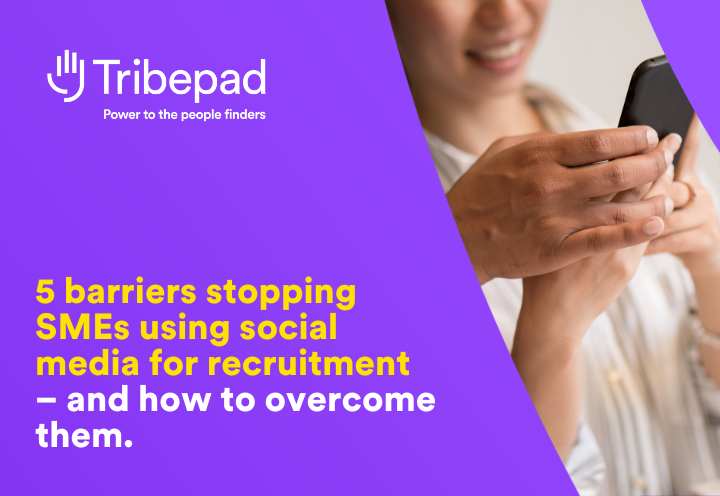Improving health and social care recruitment isn’t just about hitting targets and impressing the C-suite (although those too 😎). It’s about growing capacity to meet demand and provide accessible, high-quality care to the people who need it most.
Here are six ways to boost candidate attraction, from 5 experts in the healthcare and social care space.
Staff shortages are an enormous challenge for health and social care recruiters.
The pandemic put a career in care on more people’s radar but demand still far outstrips supply – and as co-owner of Home Instead, Andrew Wood, reminds us, this has real-world implications: “we’re all responsible for growing capacity within the care sector”.
We’ve hosted a couple of webinars recently discussing exactly this, so let’s share some practical ideas that have surfaced – with thanks to:
- Andrew Wood, co-founder of Home Instead, Hereford
- Ellie Higgins, Resourcing Manager for Mencap
- Paul Lundbeck, People Services Director at HCRG Care Group
- Rowan Marriott, former Head of Resourcing for Signet Healthcare and founder of Audience Link
- Ursula Jayes, co-founder of Relish Recruitment
For more in-depth discussion you can rewatch the webinars instantly here:
Let’s get stuck in.
Ask the experts: practical ways to attract more candidates to health and social care
1 – Engage with your local community
Co-founder of Relish Recruitment, Ursula Jayes, believes the net for candidate attraction within health and social care simply isn’t wide enough.
Many healthcare roles don’t require past experience or specific qualifications, so theoretically the candidate pool is enormous. But traditional job boards, however huge, don’t reach them because these people are often not searching for a care position.
She believes care organisations should be building relationships with potential healthcare workers earlier, by building relationships with schools, universities, and organisations across the community.
For Ursula, there’s a huge opportunity here because many people don’t realise what a fantastic career they could build in the sector, even without an extensive education background. Plus the added bonus that you’re engaging with people who other organisations mightn’t be: less competition and more accepted offers.
2 – Embrace social media
Home Instead’s Andrew talks about how they’ve used social media advertising to great effect, empowering the organisation to move largely away from boards and slash ad spend.
Andrew emphasises how social media must “inspire someone in a moment, on their mobile”, removing mental barriers to entry and “making someone think, ‘hey, I could do that’”.
Could your organisation create more proactive recruitment marketing campaigns? Do you have the right talent acquisition tech to support this activity? Are your recruiters confident copywriters, who can craft compelling comms that drive applications?
3 – Think outside the box
Ellie Higgins, Resourcing Manager for Mencap, talks about reducing reliance on traditional boards and looking to other sourcing channels.
In particular, Mencap have found joy from their Refer a Friend scheme, which helps attract good candidates who already have some understanding of the organisation and sector. The team aim to boost referral bonuses around summer and Christmas where they’ll need holiday cover too. (Here are five best practices to building a great employee referral scheme).
Mencap also experiment with out-of-home advertising, from a banner on the back of a local bus to hanging banners on town railings. This latter was an especially effective candidate attraction tool – helped by choosing areas with lots of traffic!
The resourcing team also leverage their hiring managers and staff to get ideas about where they should put notices and posters across everyone’s local communities.
They also run open days to showcase the work that happens in different locations or departments. These are non-recruitment days that educate candidates on what happens in the sector – but often turn into recruitment 😉
Ellie’s team also send leavers a personalised postcard after three months, to stay in touch and let them know they’re missed. This has seen many leavers returning to the organisation, even if part-time – fantastic.
4 – Communicate a strong EVP
People considering a career in care are inundated with choice, especially if you’ve found active jobseekers from the big boards. This creates a major issue: how do you stand out?
Download our case study from Well Pharmacy now, to discover how they used Tribepad to bring their EVP to life and increase application volume by 150% for hard-to-fill roles and 92% overall.
One of the major topics that came from our recent webinars was the importance of developing (and then communicating) a strong EVP. But what makes a strong EVP?
For Rowan Marriott – previously Head of Resourcing for Signet Healthcare and now founder of Audience Link – an EVP should encapsulate for candidates the ‘What’s in it for me?’, consistently and authentically, across every touchpoint.
Authenticity is the crucial word. As Paul Lundbeck, People Services Director at HCRG Care Group, puts it:
Your EVP shouldn’t just be your recruiters sat in a room coming up with straplines, or when someone starts that proposition won’t resonate at all. Make sure you really know your organisation and culture, and your values come through.
The upshot is, your EVP should be based on real research and collaboration across the organisation, so it accurately represents a career with you.
For instance, when HCRG went through this rebranding and EVP research process, they found some surprising things mattered to applicants that they’d not considered, like free parking. Integrating this info into adverts is an easy win.
Likewise, Ellie talks about reviewing Mencap’s recruitment processes and realising their job adverts were far too generic. To solve that, she spent time visiting sites, meeting teams, understanding shift patterns, then rewrote job adverts to paint a better picture.
(Read more about building your EVP).
Rolling this EVP throughout across every candidate touchpoint also has a huge impact on retention because it means you’re making better-fit hires who’re genuinely motivated by what you can offer.
5 – WOW with an easy, fast, and human candidate experience
Attracting applications is the first part of the equation here, but what then? Most health and social care organisations struggle with in-process dropouts and candidate ghosting way more than other sectors.
Convincing candidates to stay the distance is about building the right candidate experience. Easy, fast, and human are the buzzwords here.
- Is the process easy for candidates?
Paul talks about the impact of the seemingly-small action of adding quick apply functionality to volume roles, which boosted application completions massively. Likewise, Ellie shares how her team often make themselves available for interviews out-of-hours, because many candidates are busy nine-to-five.
The point is: how can you make your process as seamless as possible, so busy jobseekers will spare their time for you? Review your process sticking points and look for incremental ways to accelerate, streamline, and improve.
- Is your process fast enough?
Our Health and Social Care Specialist, James, emphasises how organisations often spend many thousands on job board advertising, only to lose great candidates because they don’t engage fast enough.
Sometimes care organisations pour more money into marketing and advertising when actually their problems stem from internal processes. Maybe they’ve actually got enough candidates coming in but they don’t get to them fast enough, so they lose out.
Clunky recruitment processes directly impact the candidate experience because they slow everything down, from engaging with applications to reviewing CVs to issuing contracts.
Have you chosen recruitment software that automates, streamlines, and digitises everything possible? Does it come with automated comms, to make getting back to candidates fast and simple?
- Is your process human?
The recruitment process conversation often focuses on efficiency and automation, and those things are great. But they’re great because they free your team’s time to add more human-to-human value. That’s critical in a sector that’s so people-centric.
Ellie talks about the importance of building strong relationships from the get-go, to build rapport, fuel values-based recruitment, and set the foundation for a happy, long career: “everything is an opportunity to build a relationship.”
As Ursula points out: “CX isn’t all about speed. Getting the candidate experience right is as important as having a high number of applicants”.
Some great tips there based on what other health and social care organisations are seeing work for them, right now. Let us know if you found this helpful or, even better, if you’ve got any tips to add to this list. We’re always looking for collab opportunities to share advice across the sector.
Tribepad is the trusted tech ally to smart(er) recruiters everywhere. Trusted by private and NHS healthcare organisations like Bupa, Signature, GCRG Care Group, Turning Point, NHS Professionals and Royal Devon University Healthcare NHS Foundation Trust, 25-million people in 16 languages use Tribepad.




